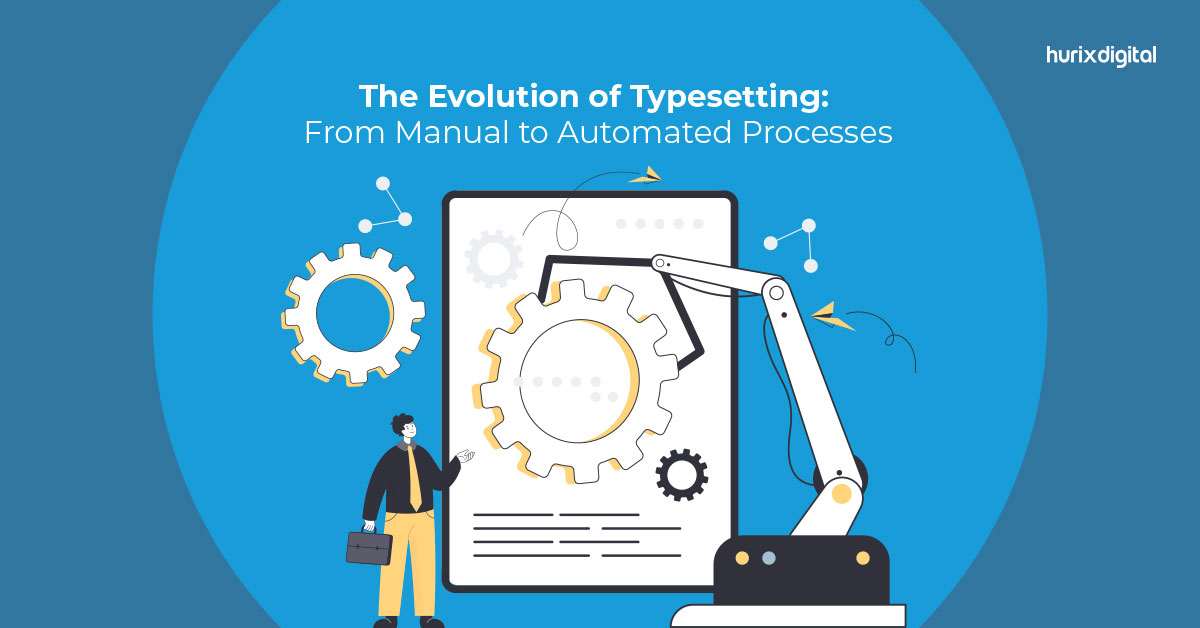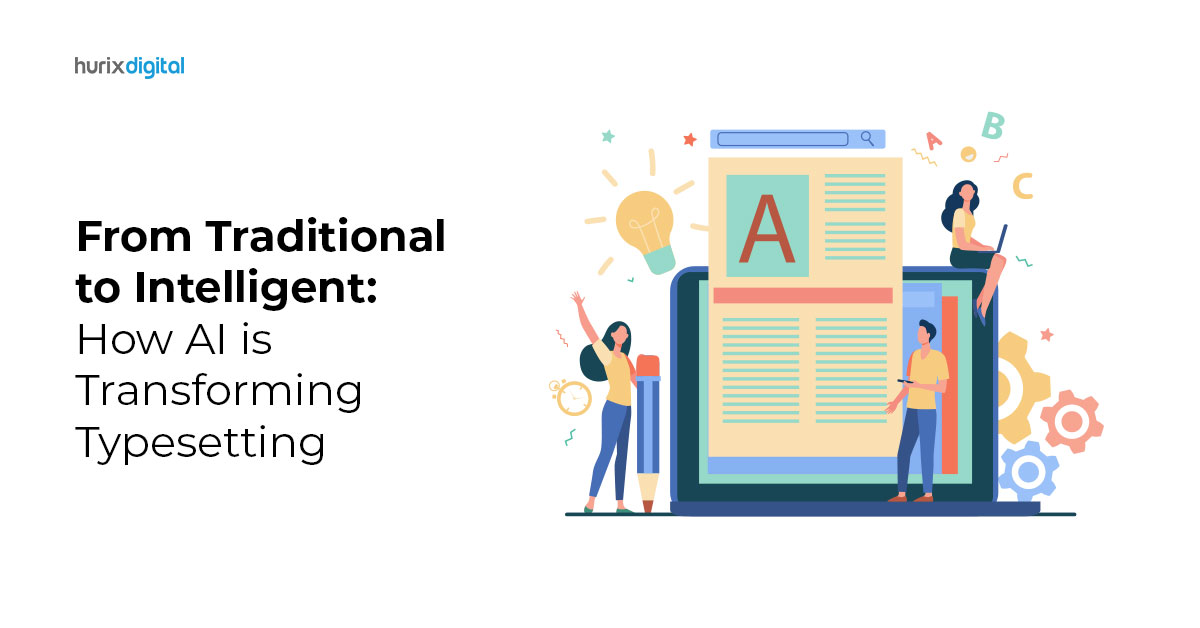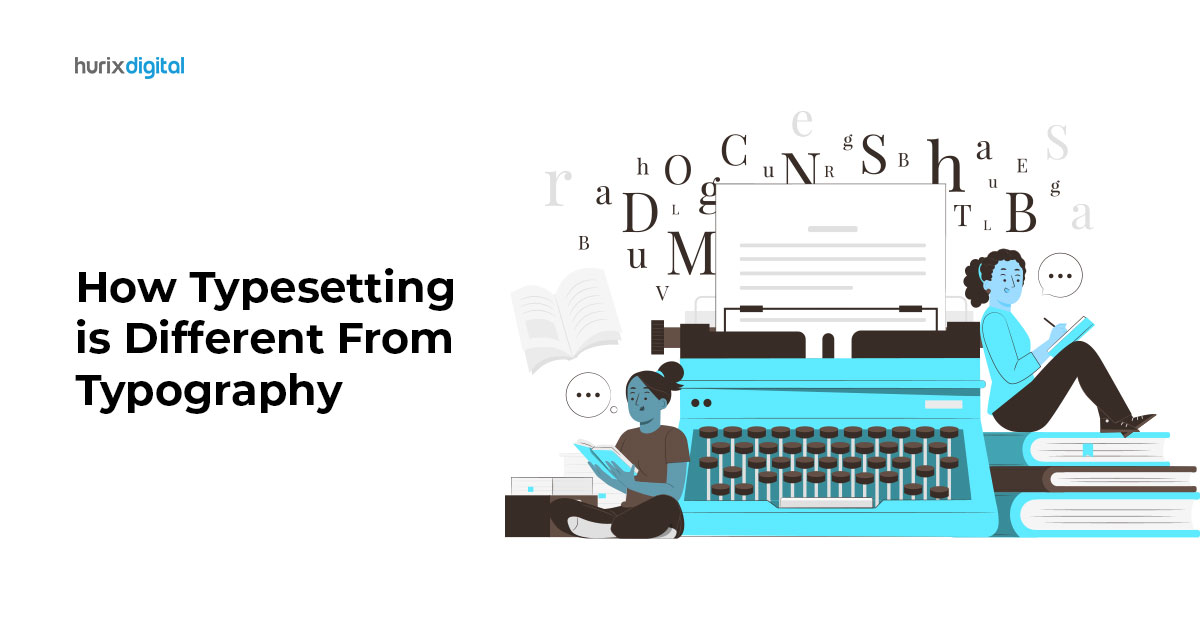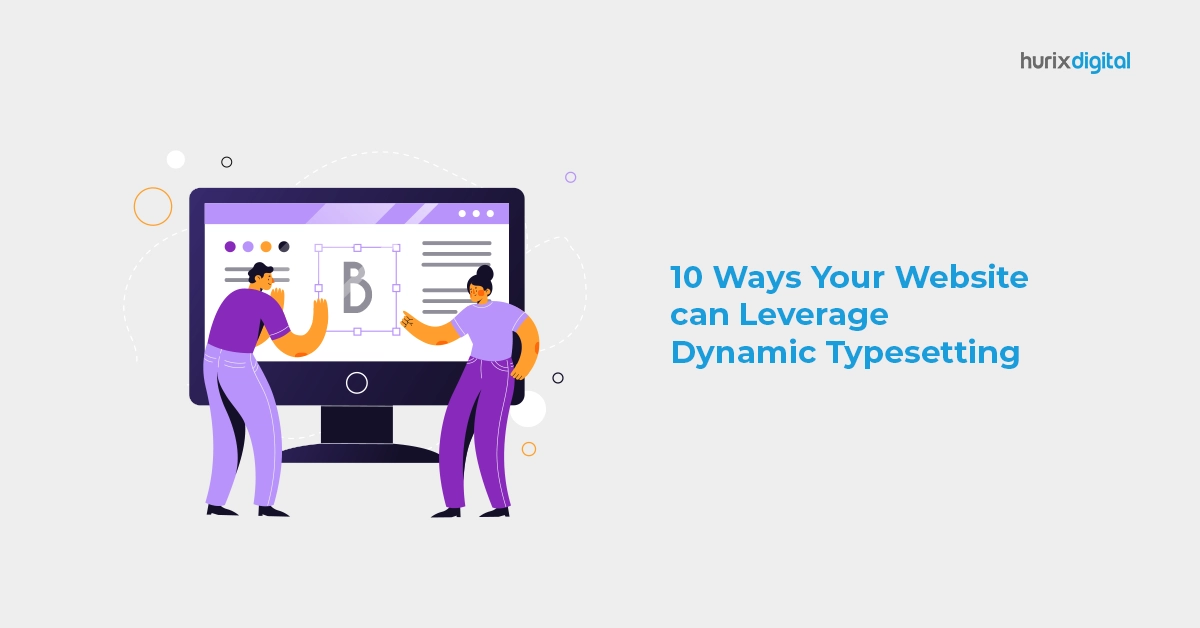
The Evolution of Typesetting: From Manual to Automated Processes
Table of Contents:
- What is Typesetting in Publishing?
- How Did Typesetting Evolve From Historic Times to Date?
- The Significance of Automated Typesetting
- Conclusion
With changing times, one needs to adapt to new ways of doing things and gain an edge or keep lagging. Keeping this in mind, if you want your books, articles, research papers, etc., to look visually appealing and clutter-free, it’s time to invest in automated typesetting: the latest form of typesetting.
Typesetting has come a long way. Gone are the days when typesetting was performed manually. Technological advancements are taking over every process in the publishing industry, and typesetting is no stranger to them.
What is Typesetting in Publishing?
Typesetting is a process that takes place after the final draft of the manuscript has been edited and is ready to be formatted.
It usually entails choosing and formatting fonts, page trim size, spacing, margins, and arranging images, tables, charts, and other graphic elements to generate an aesthetically pleasing and readable printed or digital document. Typesetting plays a vital role in enhancing the reading experience of your readers.
How Did Typesetting Evolve From Historic Times to Date?
Now that you have become familiar with the meaning of typesetting – let’s trace back the history of typesetting and understand how it has evolved to the stage it is in today.
-
Manual Typesetting
The very first type of manual typesetting – movable type – was invented in China around 1040 AD, also known as the letterpress era. Movable typesetting involved setting individual metal-type pieces by hand to form lines and pages. Compositors had to work with great precision to select letters and symbols from a case of type and ensure the type was set correctly in the composing stick and the lines and pages were centered and aligned.
In the 15th century, the movable type was adopted by Johannes Gutenberg, who introduced the printing press and revolutionized the typesetting industry in Europe and the rest of the world. During this time, books, newspapers, and other significant publications came to produce in large numbers.
-
Mechanical Typesetting
Manual typesetting was replaced by mechanical typesetting in the 19th century, where one of the earliest machines was designed by Ottmar Mergenthaler in 1884 and called the Linotype machine.
In mechanical typesetting, also referred to as hot metal typesetting, an operator known as the typesetter uses a keyboard resembling one used by a typewriter. This typesetting process by mechanical machines was much faster and more efficient than the manual process, enabling publishers to produce a large number of publications quickly.
-
Phototypesetting
Phototypesetting replaced mechanical typesetting in the 1950s and 1960s. Also known as cold type, it involved projecting images of type onto photographic paper, which were then developed and used for printing.
During the 20th century, phototypesetting machines quickly rose to prominence for typesetting due to their ability to eliminate differences in letter sizes and uneven spaces and ensure accuracy in creating complex text.
-
Automated Typesetting
The digital era of typesetting began in the 1980s with desktop publishing. Soon, with the advent of the computer age, automated typesetting came into existence.
Automated typesetting happens through tools like Adobe InDesign, QuarkXPress, LaTeX typesetting software, etc. These tools allow publishers and designers complete control over text layout and style and support complex mathematical symbols, equations, and other special characters frequently used in academic and scientific writing.
Automated typesetting has revolutionized the typesetting industry, making it more accessible and affordable for self-publishing authors and smaller publishing houses and facilitating the production of high-quality books.
Also Read: Balancing Automation and Human Touch in Typesetting: Finding the Right Blend
The Significance of Automated Typesetting
Automated typesetting is integral and can benefit you in the following ways:
-
Gives Your Book a Professional Look
Typesetting errors can make readers lose interest in fictional and nonfictional books. They can make it difficult for readers to focus and ultimately cause them to abandon your book.
All these problems can be handled with automated typesetting, which makes your book’s layout look professional. It arranges your book’s text and image elements properly and takes care of things such as kerning, drop caps, word stacks, and book blocks.
In addition, automated typesetting software takes care of things including:
- Contrast: It helps to draw your readers’ attention to the important parts of your book.
- Structure: It is concerned with the headers (e.g., chapter titles), body (e.g., text and images), and footers (e.g., page numbers) of a book. Proper structure makes it easier for your readers to navigate the book and understand the content of your book.
- Spacing: It provides a consistent reading experience for your readers by ensuring proper space between words, equal space between paragraphs, and a loose and large space between chapters.
- Orphans and widows: It ensures that the last words in a paragraph are not detached from it. If they are, it attaches them back to ensure the reading experience is not disjointed.
-
Builds Your Brand Identity
Automated typesetting improves the attractiveness of your book by ensuring that it’s free of typesetting errors. Producing a quality book sets you apart from people who publish poor-quality books.
Moreover, it shows your dedication to providing a smooth reading experience for your readers. All this helps create recognition for your identity as an author or brand and eventually develop a wide audience and customer base.
Also Read: Top Automation Tools for Efficient Typesetting Workflows
Conclusion
With more and more people opting to self-publish books, evident by a 264% rise in the number of self-published books in recent years, typesetting is more important than ever to establish a unique identity.
In this scenario, if you want to save time and money without compromising on the quality of your book, outsourcing typesetting services from Hurix can help.
Hurix Digital provides customized digital prepress services to meet your publishing needs. Equipped with a team of experienced typesetters and state-of-the-art technological software, Hurix strives to convert your manuscripts into print-ready formats. As a believer in providing the best reading experience, Hurix is the trusted choice of companies like Cambridge University Press, Wiley, and more.
To know more about the typesetting services, get in touch with Hurix.

SVP & Head – Hurix Technology Solutions
Global Delivery head with 25 years of working experience in NYC investment banks and fintech companies. Hands-on technology delivery management and program management, accountable for stakeholder relationships, Strategic roadmap, P&L, Revenue growth, Account Management, and employee satisfaction.







